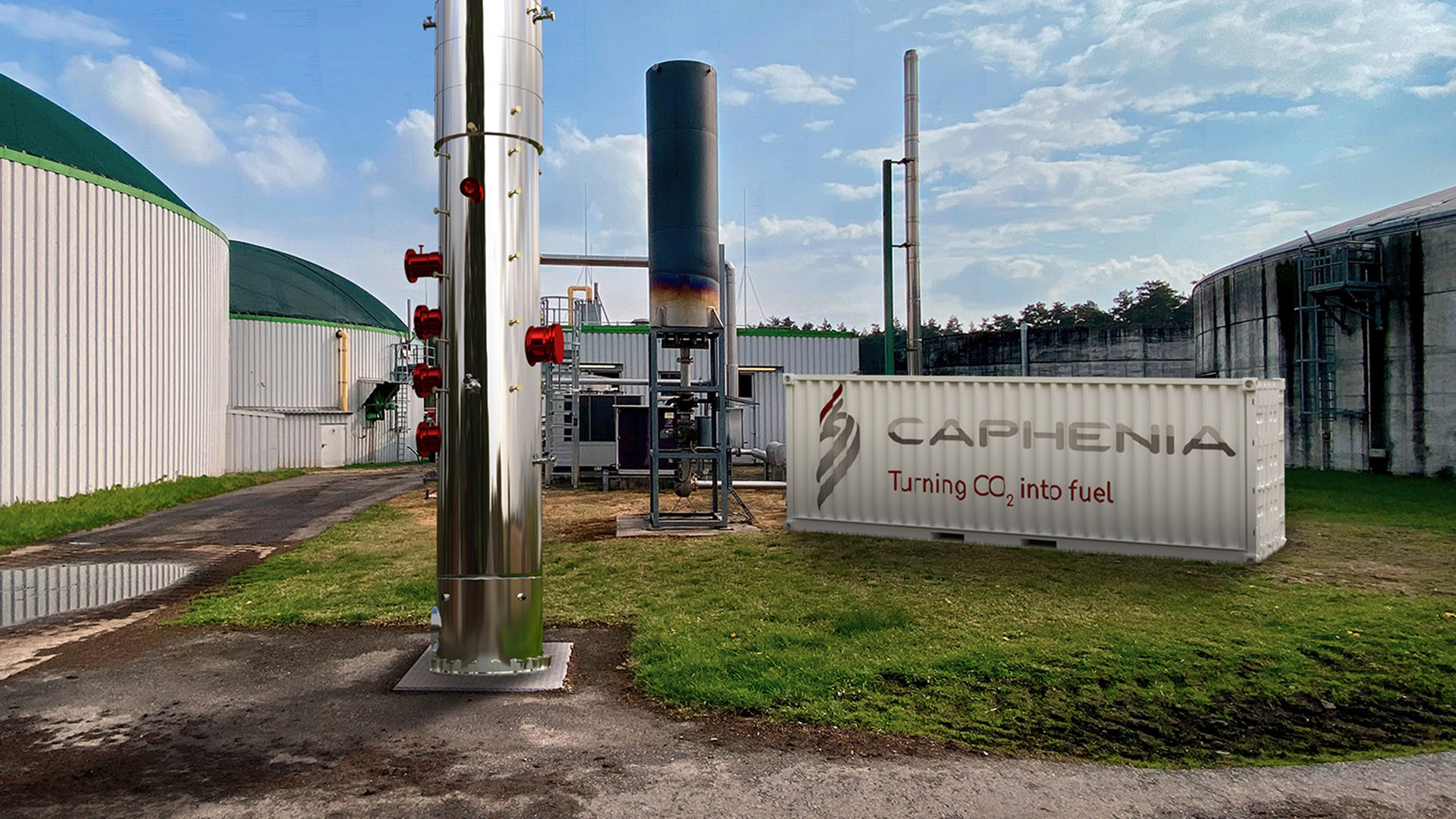The CAPHENIA process is superior to conventional e-fuels
A study by the independent energy research center FfE shows: In a direct comparison, the CAPHENIA Power-and-Gas-to-Liquid process performs better than the Power-to-Liquid process, as the CO2 footprint is significantly lower.
For a current study, the energy research center FfE in Munich, Germany, compared measured values of the CAPHENIA process with electrolysis for the production of Power-to-Liquids. With a clear result: If you produce 1 kilogram of kerosene with both processes, the CAPHENIA process produces on average 1.86 units of CO2. By contrast, the production of Power-to-Liquids, i.e. conventional e-fuels, produces an average of 8.96 units of CO2 per kilogram of kerosene.
How can this be explained? In the CAPHENIA Power-and-Gas-to-Liquid process, methane is split into carbon and hydrogen and then processed into synthesis gas.
The CAPHENIA Power-and-Gas-to-Liquid process will continue to have an advantage over the Power-to-Liquid process in the near future.
Power-to-Liquid fuels, on the other hand, are obtained through electrolysis, where water is split into hydrogen and oxygen. Carbon dioxide is added to the hydrogen produced before synthesis gas is finally produced as the basis for fuels. This process requires a lot of electricity, which should come from renewable energies in order to protect the climate.
And this is exactly where the problem lies: In the foreseeable future, such a large amount of green electricity will not be available. That is why the scientists at the energy research center FfE based their study on the current European electricity mix. In direct comparison with the CAPHENIA process, electrolysis has a somewhat higher degree of efficiency, but the effect is cancelled by the high power consumption.
Applying the existing European electricity mix, the CAPHENIA process has a clear advantage – and according to the scientists it will advantageous for the foreseeable future: “In summary, it can be said that the CAPHENIA process currently performs better than the Power-to-Liquid process applying the current European electricity mix of 0,44 kg CO2e per kWh of electricity […] and will continue to have an advantage over the Power-to-Liquid process in the near future“, stated the experts in the conclusion of their study.
Only with an electricity mix of around 0.12 kg CO2e per kWh – which currently corresponds to an electricity mix based purely on photovoltaics – both processes show the same CO2 balance. These numbers are valid when using natural gas for the CAPHENIA process – if biogas is used, the CO2 balance is, as can be expected, even better.






